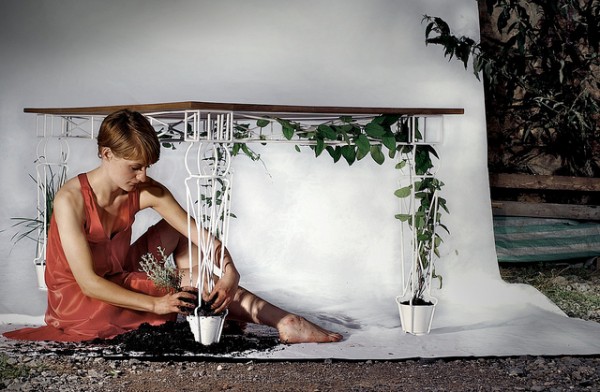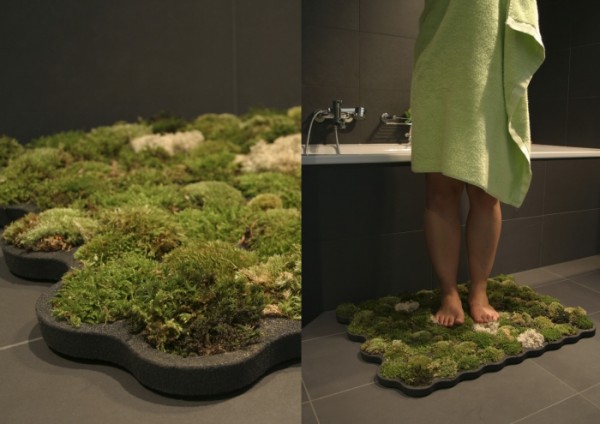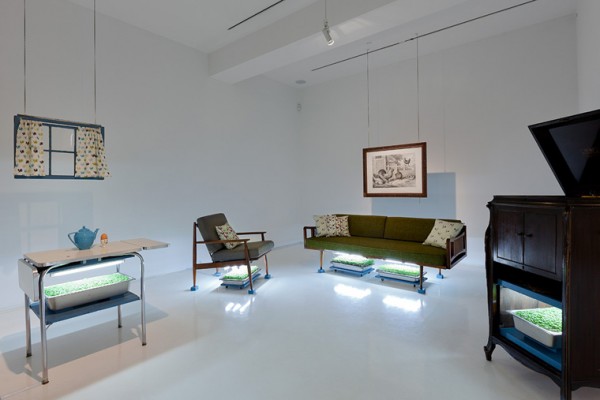Where do plants grow? (This isn’t a trick question). Most people would probably answer, “outside,” and they’d be right. Plants, especially those that we consume for nourishment, flourish naturally in the wild, where the sun and rain provide just the right combination of energy and hydration. For many centuries, however, humans have wanted to bring the beauty and vitality of plants closer to home. In fact, some of the earliest known records of indoor plants come from the artwork of ancient Egypt which depicts houseplants in urns and troughs.
At first, indoor plants were those with particular exotic beauty or medicinal properties. Over the decades, we’ve learned that even the most common looking houseplants can clean up indoor air pollution and brighten our mood. As more flock to the world’s cities, space has become a valuable commodity. Few urban families have yard space that can be used to grow food, so indoor gardening technologies provide an alternative for those that still want to eat local.
But what if plants could be more than just decorations or source of nourishment? Recently we’ve seen new, plant-based concepts cropping up in the interior design word. These pieces, while functional, also help to renew our appreciation of flora in an exciting and stylish way. Browse through our favorites below, and be sure to share links to your own finds in the comments!
1. Plantable by Jail-Make

Climbing, crawling plants are some of the easiest and most fun to grow. Over time, these “creepers” can be trained to cover a trellis, a porch railing, or a parcel of ground that’s less than friendly to grass or flowers. Raising climbing plants indoors is more of a challenge, as they can quickly overtake an entire room if you let them. This whimsical table design from London-based Jail-Make studio removes all threat of such a power struggle. As Inhabitat notes, “the Plantable consists of four potted table legs attached to a recycled English oak top. Each leg is hand bent and fillet brazed into a twisting trellis for greenery to grow upon.” All you have to do is plant and water your favorite climbing plant, whether it’s honeysuckle or sweet peas, and watch them slowly grow around the table.
2. Vege Table Furniture by Judy Hoysak

When is a coffee table more than a coffee table? When it turns your living room into an urban farm, of course! As we mentioned before, space comes at a premium for those living in dense urban environments. Many of us don’t even have a porch or balcony on which we could grow some of our own food. Indoor container gardens can work, but only if you’ve got the extra floor space and can keep kids and pets from digging in the dirt. When living in a tiny space, items that perform multiple functions are highly desirable, which is why we love this combination coffee table/self-watering planter. Bonus! This same designer makes a second piece called “The Bean Screen” which (as you might have guessed) is a room divider that grows beans.
3. Living Bathmat by La Chanh Nguyen

If you’ve ever imagined what it would be like to have your own woodland oasis, complete with secluded outdoor shower, this design from Swiss designer La Chanh Nguyen could be the next best thing. Instead of stepping out of the shower onto a ho-hum rubber-backed carpet, think how awesome it would feel to sink your freshly-washed toes into a natural rug of living moss! The planted bathmat uses a decay-free foam (plastazote) as a growing surface for several different varieties of moss. According to Nyguen, not much maintenance is required, so long as you shower everyday, and use a biodegradable soap (or make sure no soap residue follows you onto the moss).
4. Extraordinary Greens by Jenna Spevack

Love the idea of a table that grows food but wish you could extend it to your entire living room? Artist Jenna Spevack knows how you feel. She recently debuted 8 Extraordinary Greens, a solo-art installation that aims to provide healthy greens to extraordinary people with ordinary incomes. As Crisp Green reports, “the exhibition showcases efficient, sub-irrigated systems for growing microgreens, that have been built into everyday objects and furniture. The modified household objects are fitted with lights, providing necessary light for the plants but also creating a sense of spotlighting the greens similar to an art object lit within a gallery.”